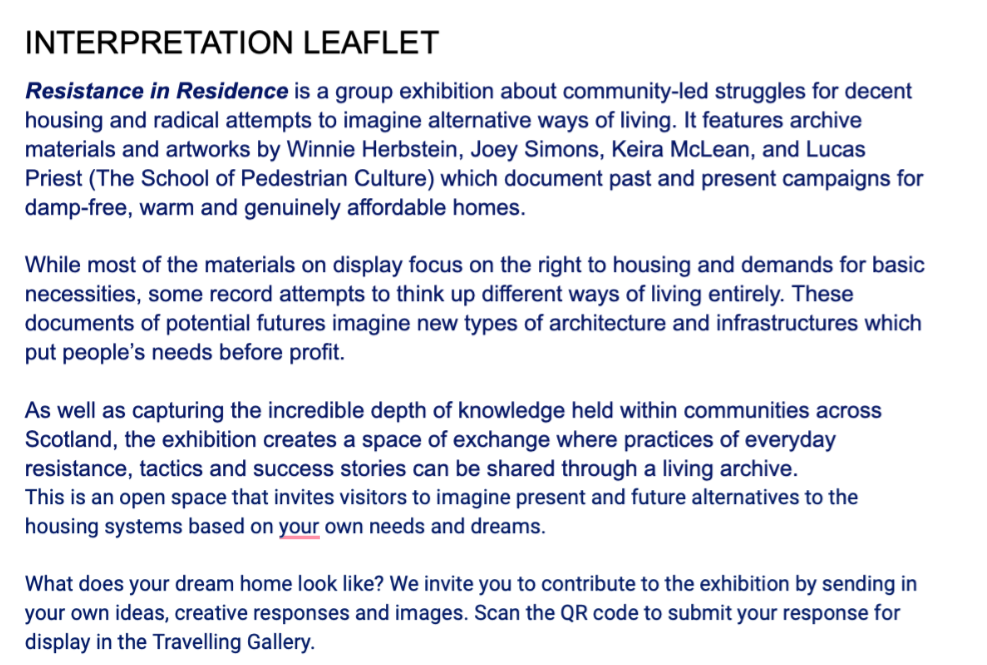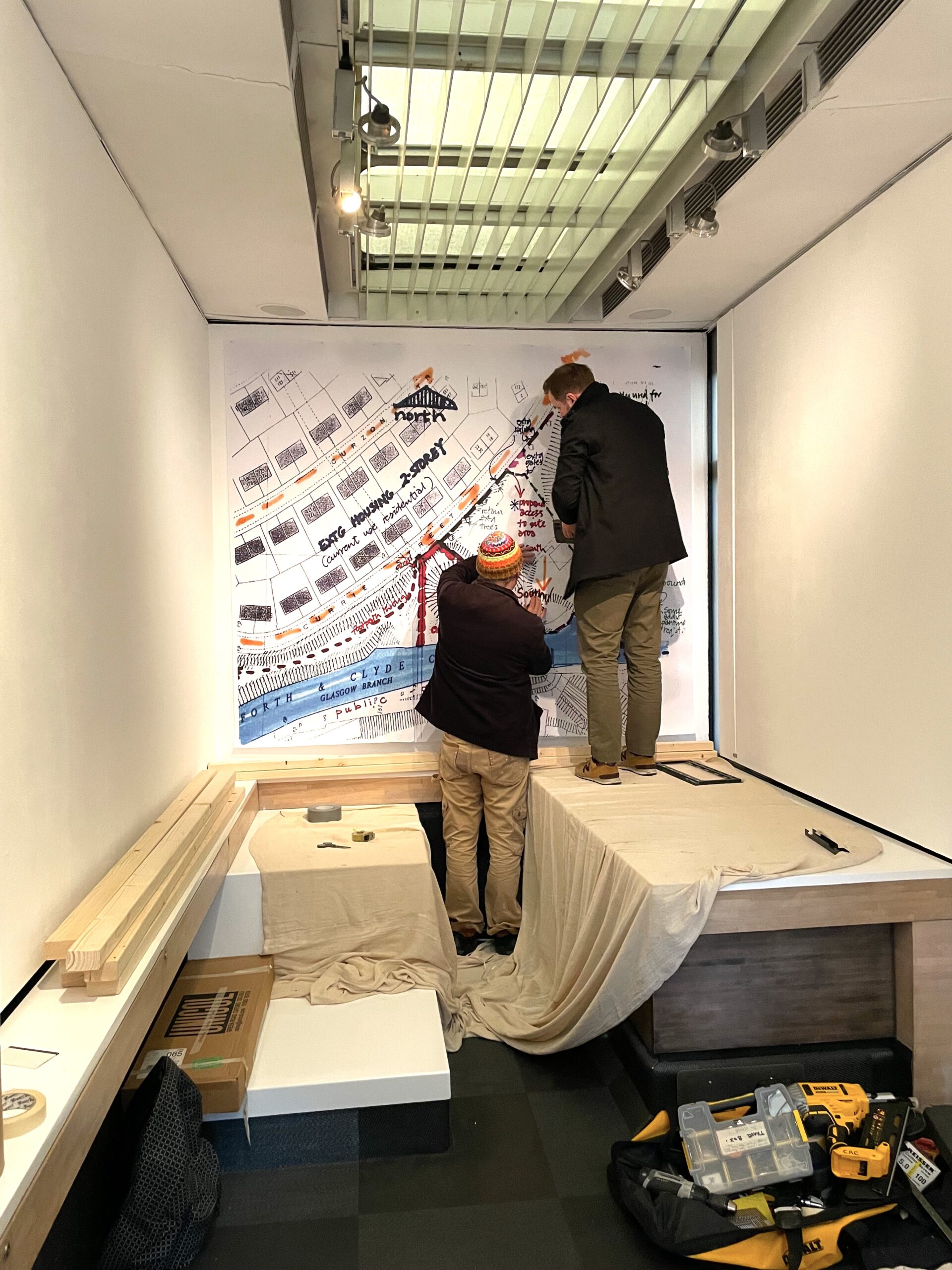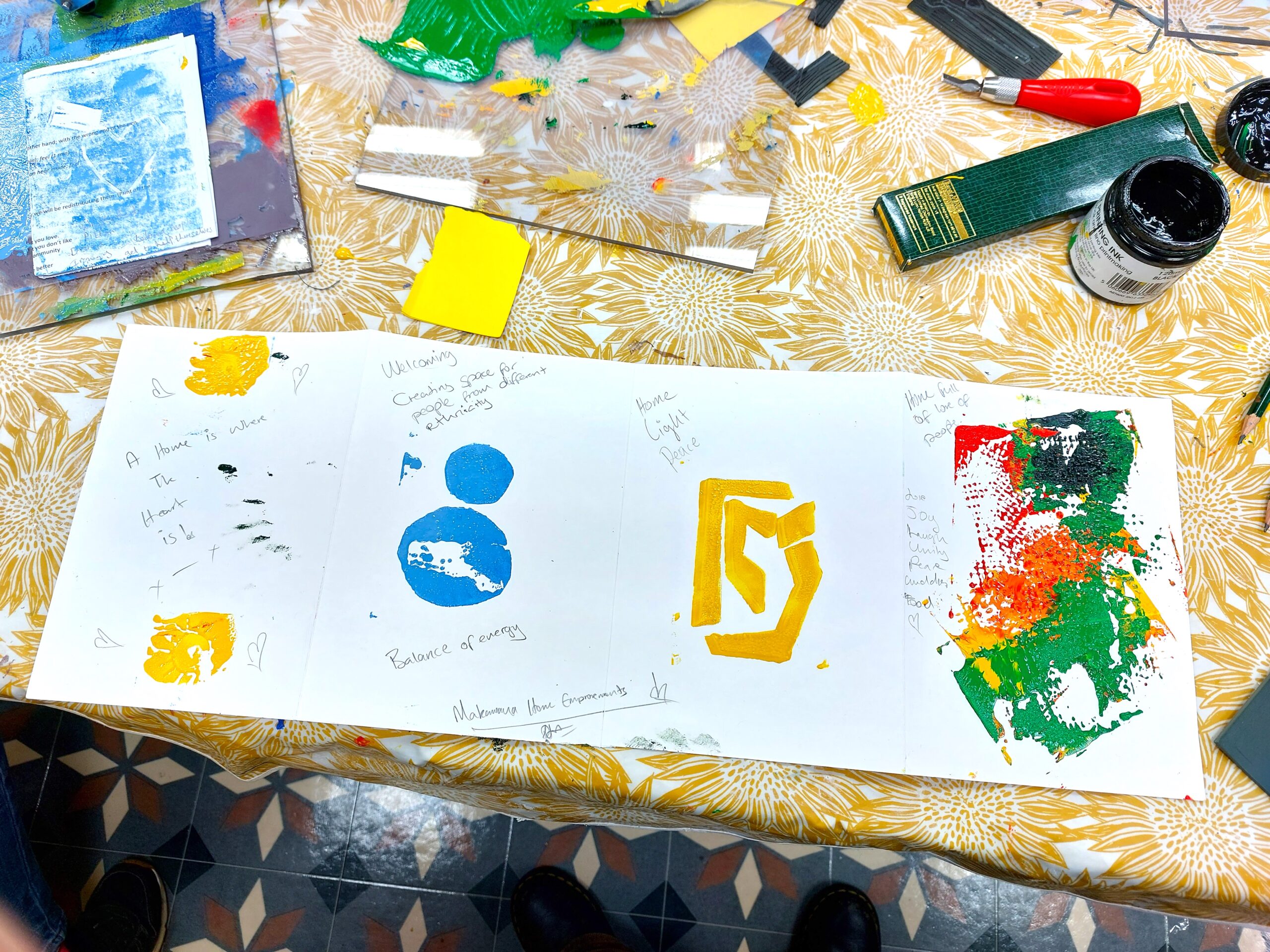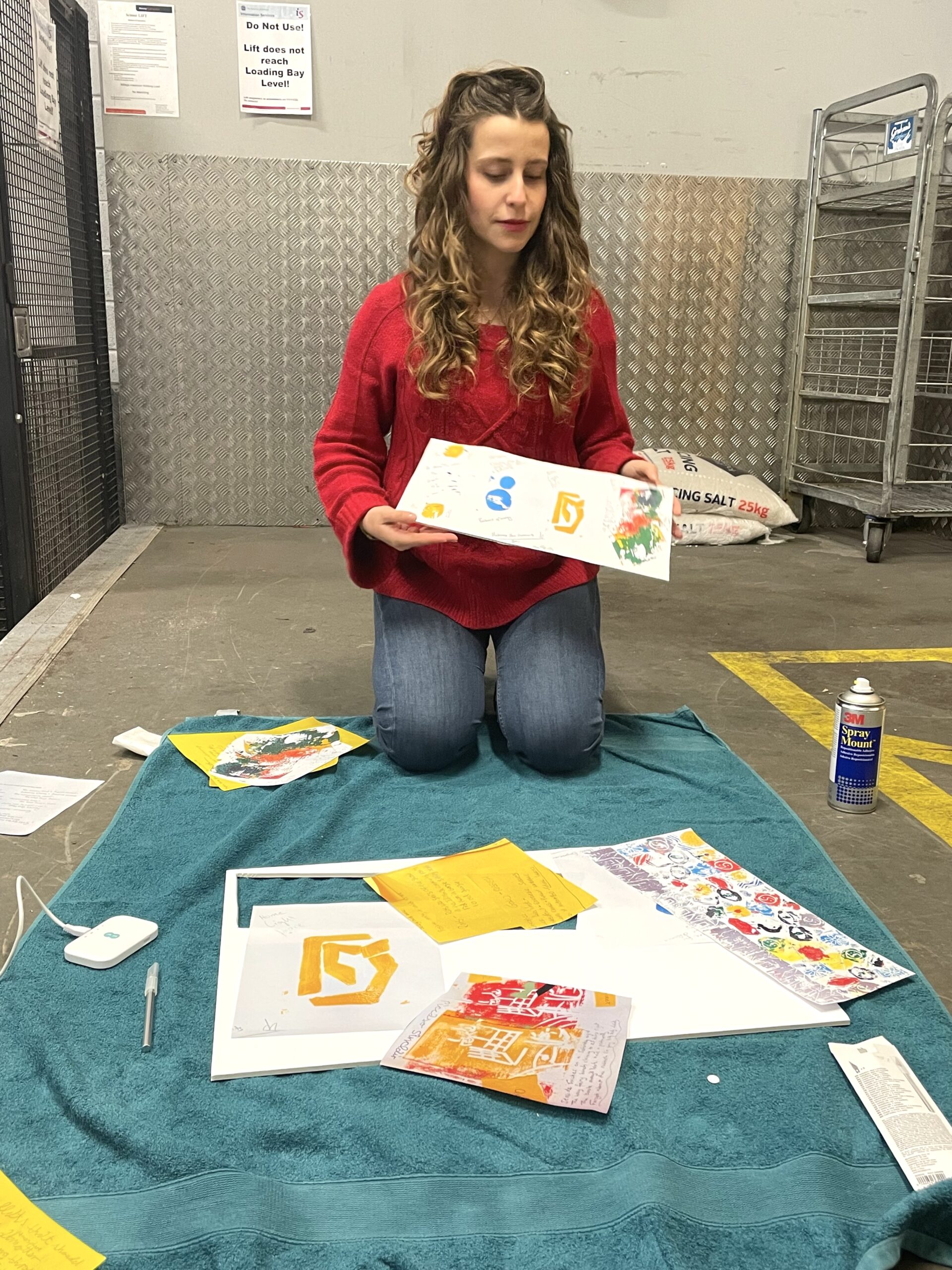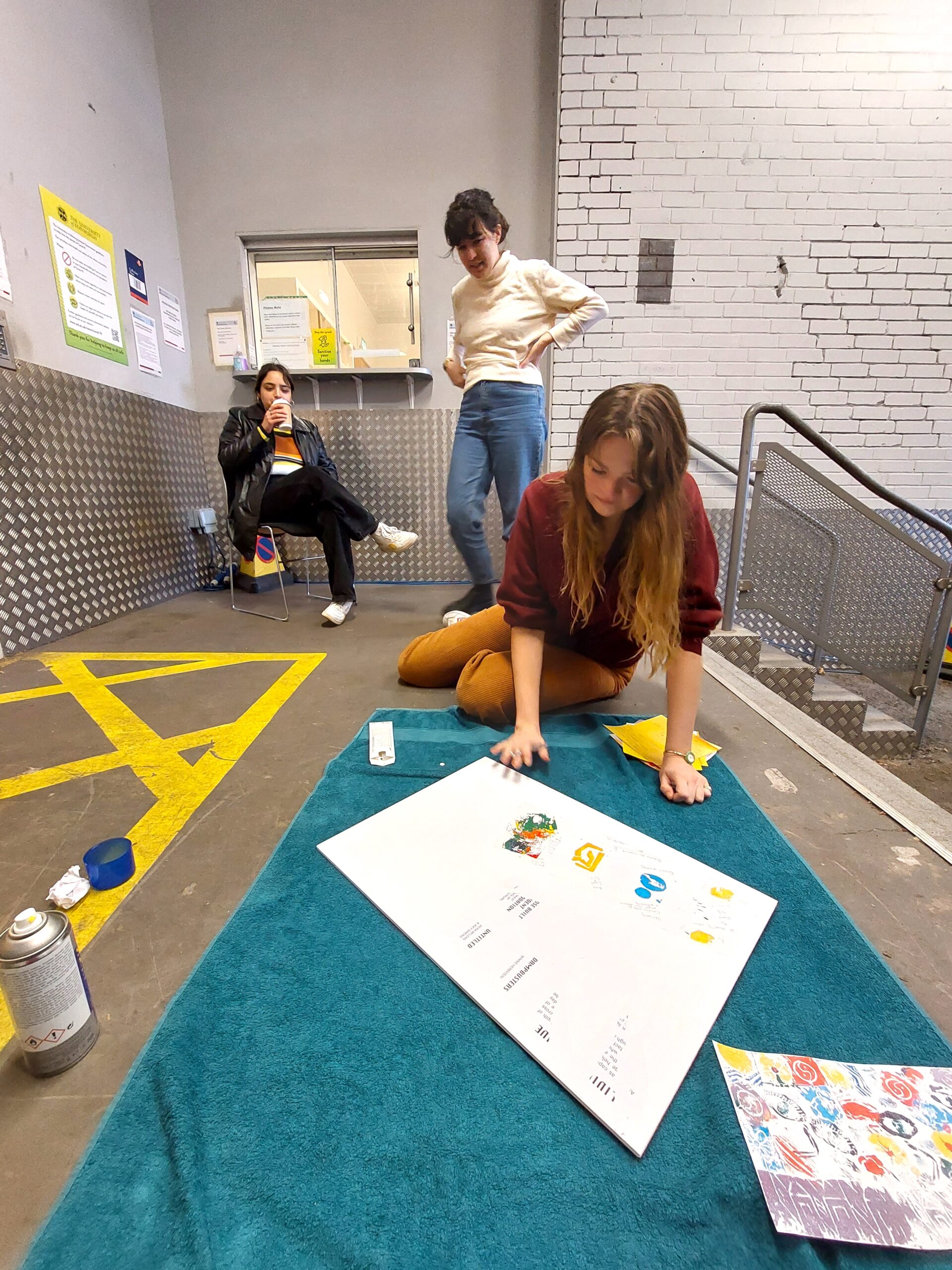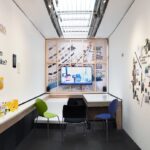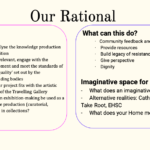The installation has begun yesterday, but over the last couple of days, we faced a series of challenges.
With only a few days before opening, Winnie challenged the curatorial rationale questioning the use of terms like ‘inspiring’ and demanding a better separation between campaigns focused on achieving basic housing needs and those exploring alternative housing systems altogether. We reworked the text and settled on this curatorial rationale:
Being away from the space, Winnie also insisted on seeing TG on the day of instal before deciding which wallpaper she wanted around the screen presenting Dampbuster. This slowed our installation process as on the first day the technicians could only paste the paper, and the construction of the stud wall had to wait until today. In retrospect, we realised we should have structured better the conversations with Winnie at an earlier stage to ensure we were fully on board with design, priorities and curatorial plans. The lack of clear communication, possibly exacerbated by her inability of being physically present in the exhibition space, led her to request last minutes changes that have been hard for us to cope with.
We also faced some issues with Joey and Keira’s workbook as we realised that we had imagined and budgeted for a black-and-white one, while the artists had envisioned one in colour. We compromised by printing fewer copies but in colour.
There were also some miscommunications about the creative responses from CWC. While we imagined exhibiting the outcomes of the workshop as individual submissions, we discovered that they had been reworked into one single concertina book and collaged together altering what individuals had originally created. It felt like we fell into the same exploitative behaviour I tried to avoid when working with CWC. The reworking of the creative responses clearly signalled that we did not recognise them as valuable finished artworks: the opposite of what we had in mind with the Living Archive.
I managed to recover and print some photos of the original works to display. I also reached out to CWC to apologise and explain the situation as it felt necessary for me to take responsibility.
Retrospectively, these events taught me about the importance of better structured communication – possibly in the form of a contract or a letter of agreement- as especially when commissioning new works misunderstandings are simple and the consequences can be significant.

